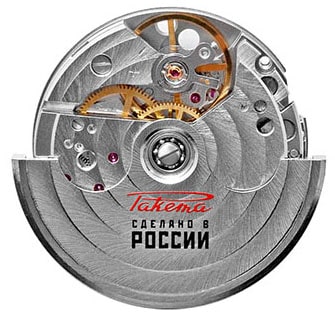
Raketa watches are not built with tourbillons, minute repeaters or flyback chronographs. The watches we build are meant to do one thing, and do it well: tell the time. We follow the Soviet design principle that the more complicated a thing is, the less reliable it will be. Thus, our watches use an exceptionally simple, yet robust mechanism, that has undergone over 60 years of incremental adjustments, simplifications and improvements.
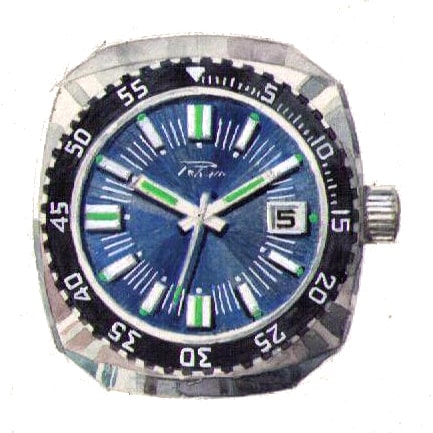
During the Soviet period, Raketa produced watches for the army, navy and airforce: institutions that cared about reliability and toughness above all else. We catered to the elite sections of the Soviet forces, and produced watches that would be used in some of the most extreme environments on Earth, such as by the aerial bomber force, the submarine fleet, and the elite arctic troops.

During the height of the space race, the Soviet cosmonautics program needed a robust and accurate watch for cosmonauts to wear. The watches also needed special functions, such as a 24 hour movement enabling cosmonauts to distinguish day from night and such as an automatic disengage system, that protected the automatic module from wearing out in space. Thus, in the spirit of the watches that it already made for Soviet pilots, Raketa developed watches for cosmonauts employing extremely high standards of production, the legacy of which continues to this day.
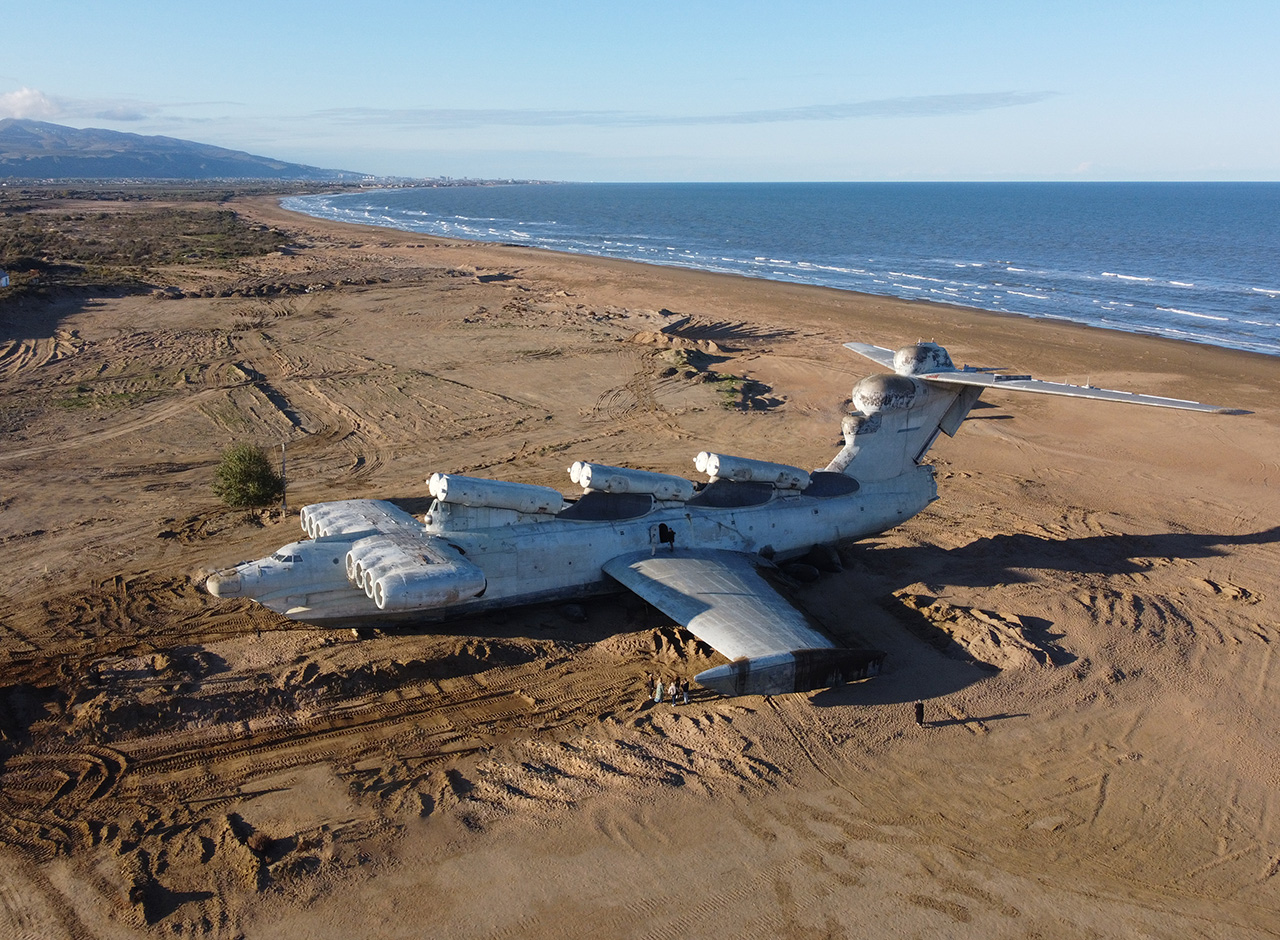
The Raketa Watch Factory has always been inspired by incredible human technical achievements. It has therefore designed and manufactured a tool watch as testimony to the Lun-class Ekranoplan: a Soviet era hybrid machine - half ship, half plane - unlike anything else in the world. The insert of the Raketa “Ekranoplan” rotating bezel is made from a piece of metal from the Lun-class Ekranoplan, officially given to the Factory by the city of Derbent which is in charge of safeguarding the Ekranoplan.
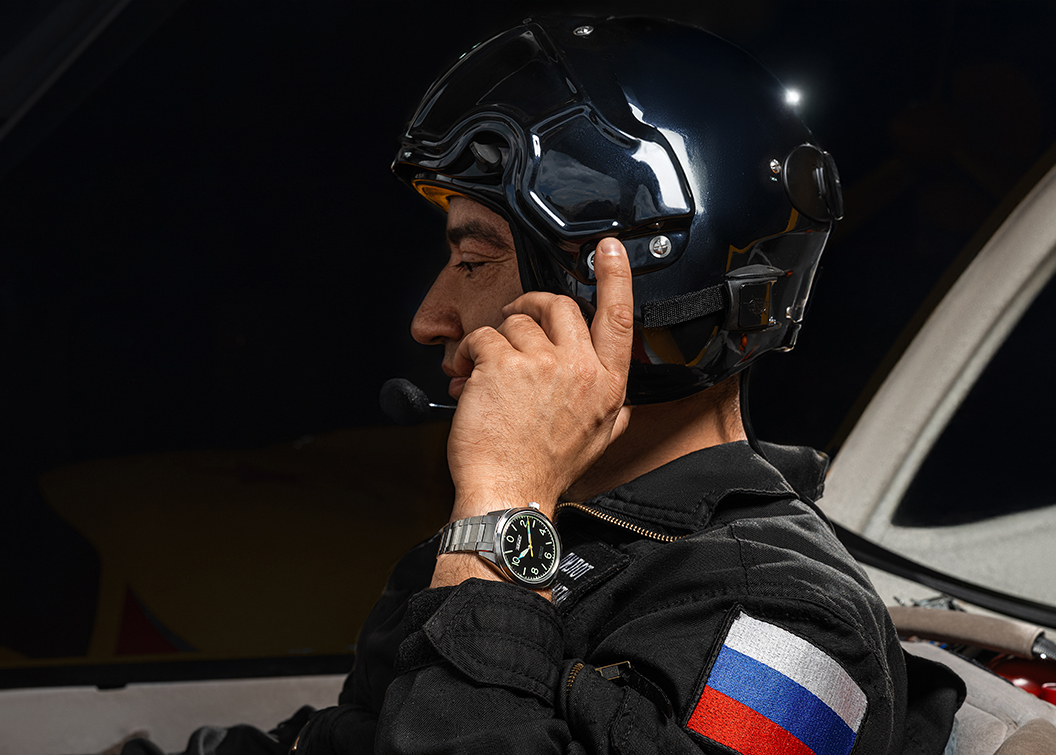
The history of aviator watches dates back to the early 20th century, when aviation and watches evolved side by side. The first aviator watches were built as professional tools, eschewing decorations in favor of durability, reliability, and readability. They had a strict and minimalistic design: a round case, a high-contrast dial, wide hands, and large numerals.
In designing its new Pilot model, Raketa tried to recreate the spirit of early aviator watches, following the principle of "nothing superfluous".
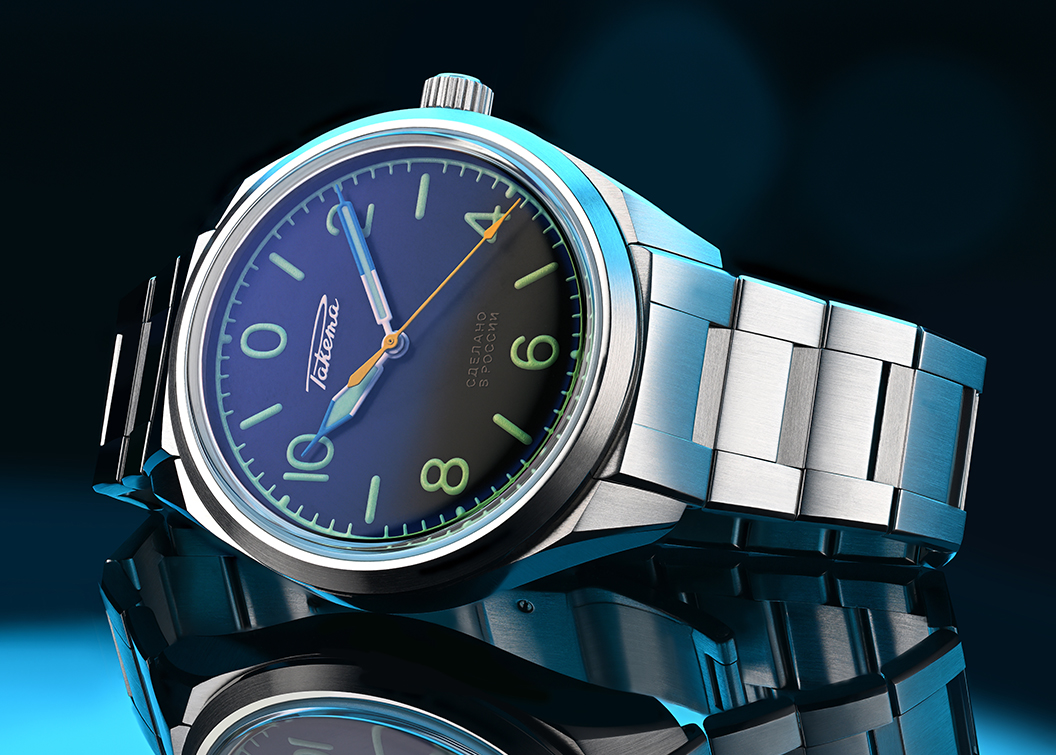
Designed in a classic style but with Raketa's recognisable identity, the new case with its clean facets combines a glossy polish and a satin finish. This look is harmoniously continued by the stainless-steel bracelet, which emphasises the masculine character of the watch. A genuine leather strap is also included in the set. The movement is protected by a screw-in crown, which provides a water resistance of up to 200 meters.
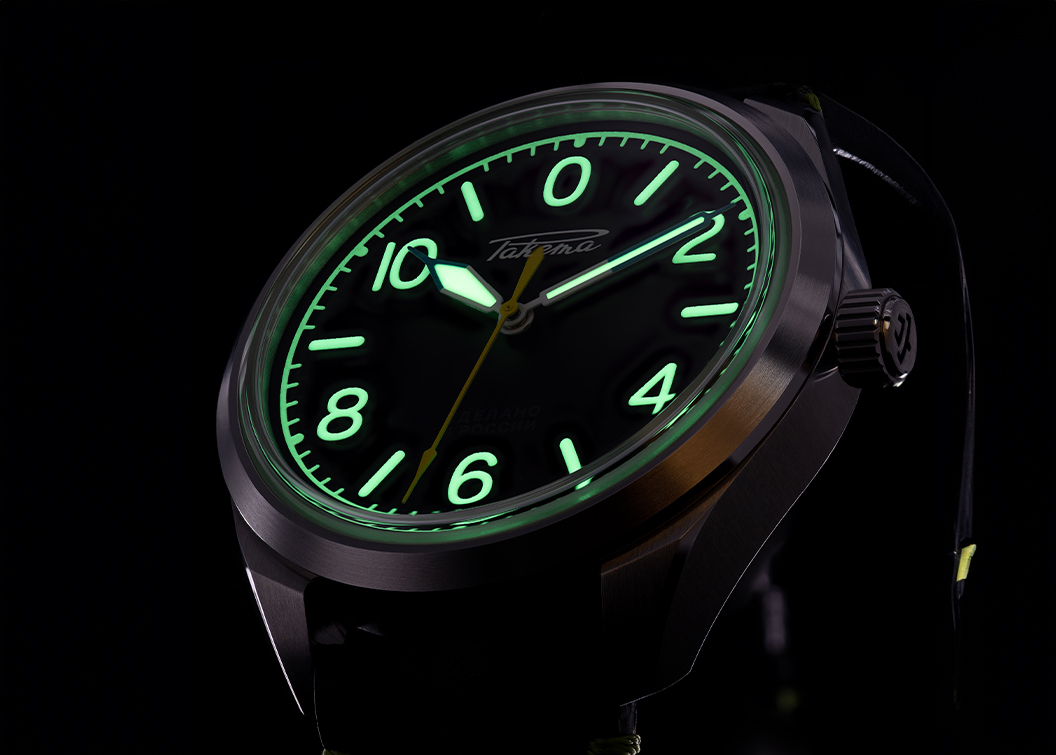
Several features ensure easy readability in all lighting conditions. Super-LumiNova coating is applied to the markers and large numerals of the dial, but also to the hour and minute hands. Contrast is created through colour combinations: all the hands including the bright yellow second hand perfectly stand out against the matte black dial stylised as an aircraft instrument. A double-sided anti-reflective coating on the sapphire crystal provides additional assurance of accurate readings.
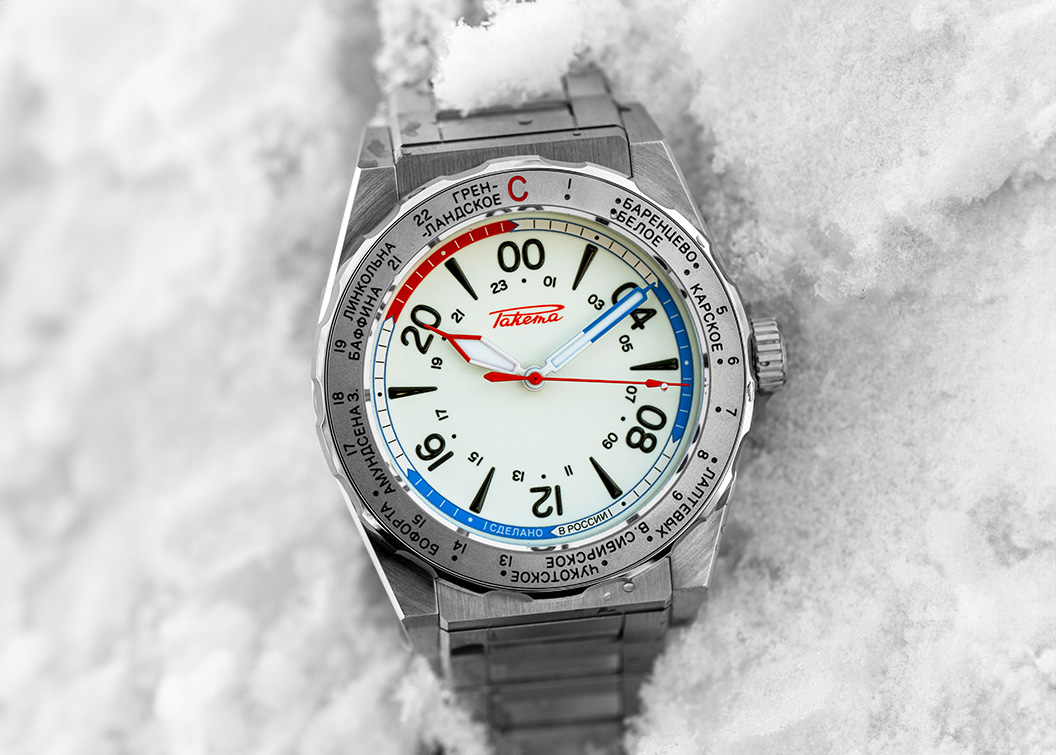
The Raketa 24-hour movement was specially developed in 1970 by the Raketa Watch Factory for the polar explorers of the 16th Soviet Antarctic expedition. Since this freezing continent is in perpetual daylight or darkness during consecutive periods of 6 months, this watch needed not only to be robust but also needed a special 24 hour movement that would allow to tell the time without knowing if it was day or night.

Following its long tradition of making watches for polar explorers, Raketa has developed a model for people who are ready to set out to conquer boundless polar spaces by land and sea. Six lines divide the perimeter of the 24-hour dial into 6 quarters (4 hours each) allowing each crewmember to keep count of his watches/shifts during polar maritime expeditions.
Each Raketa Polar watch has a certificate confirming its technical fitness for use in the harshest natural conditions of polar regions. The certificate is issued within the frame of the “Arctic voluntary certification system”.
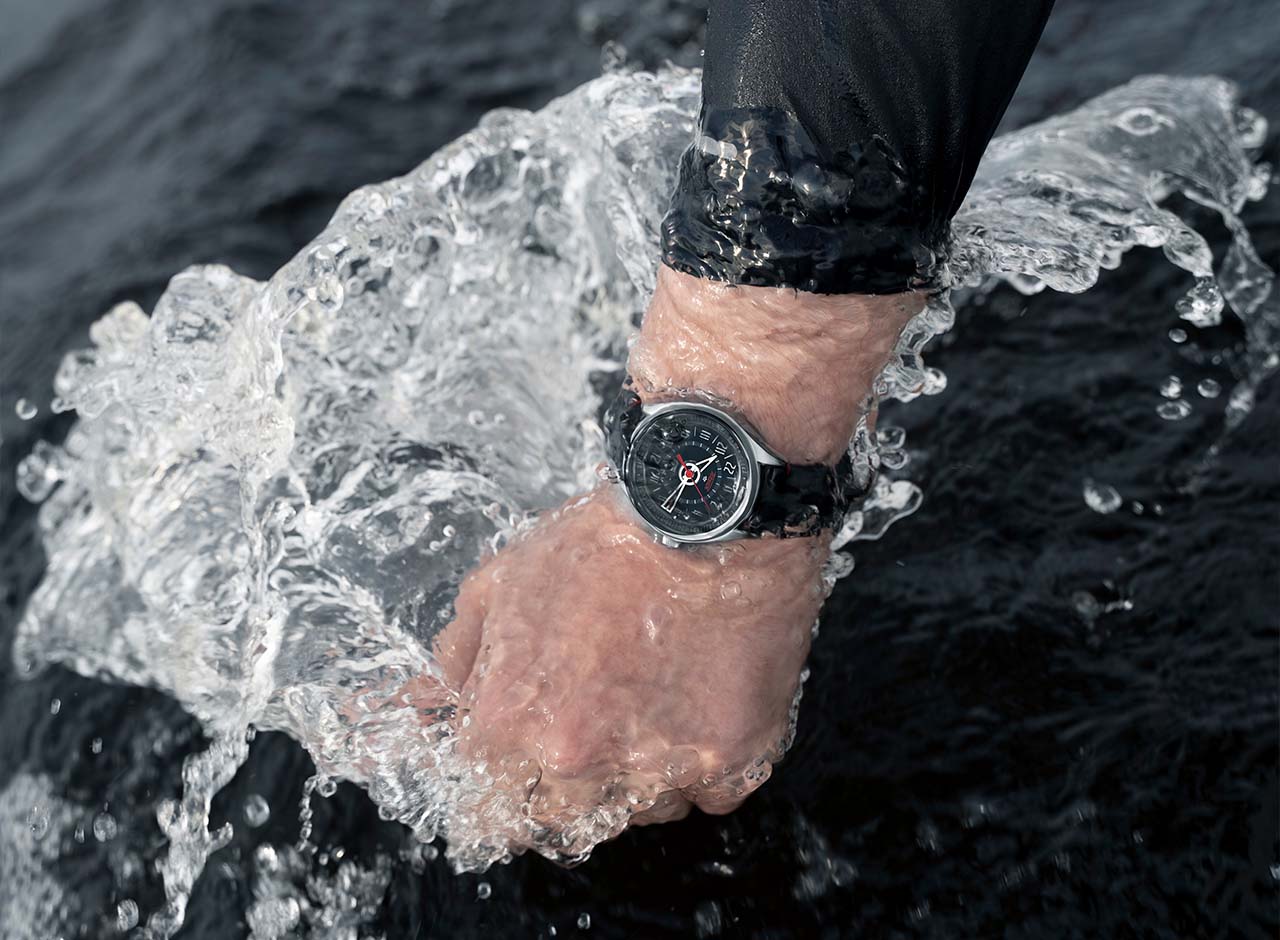
In the late 1970s, Soviet submarine crews needed a watch. Staying underwater for many months, they needed a watch with a robust 24-hour movement to allow them to distinguish day from night. Additionally, it needed to be a watch with a bi-directional rotor, so that it could more efficiently wind itself in cramped conditions. Given its proximity to the sea, Raketa already had a strong history of making naval watches, and was naturally given the task of creating such a watch. To this day, Raketa continues the tradition of producing specialised watches for submariners.
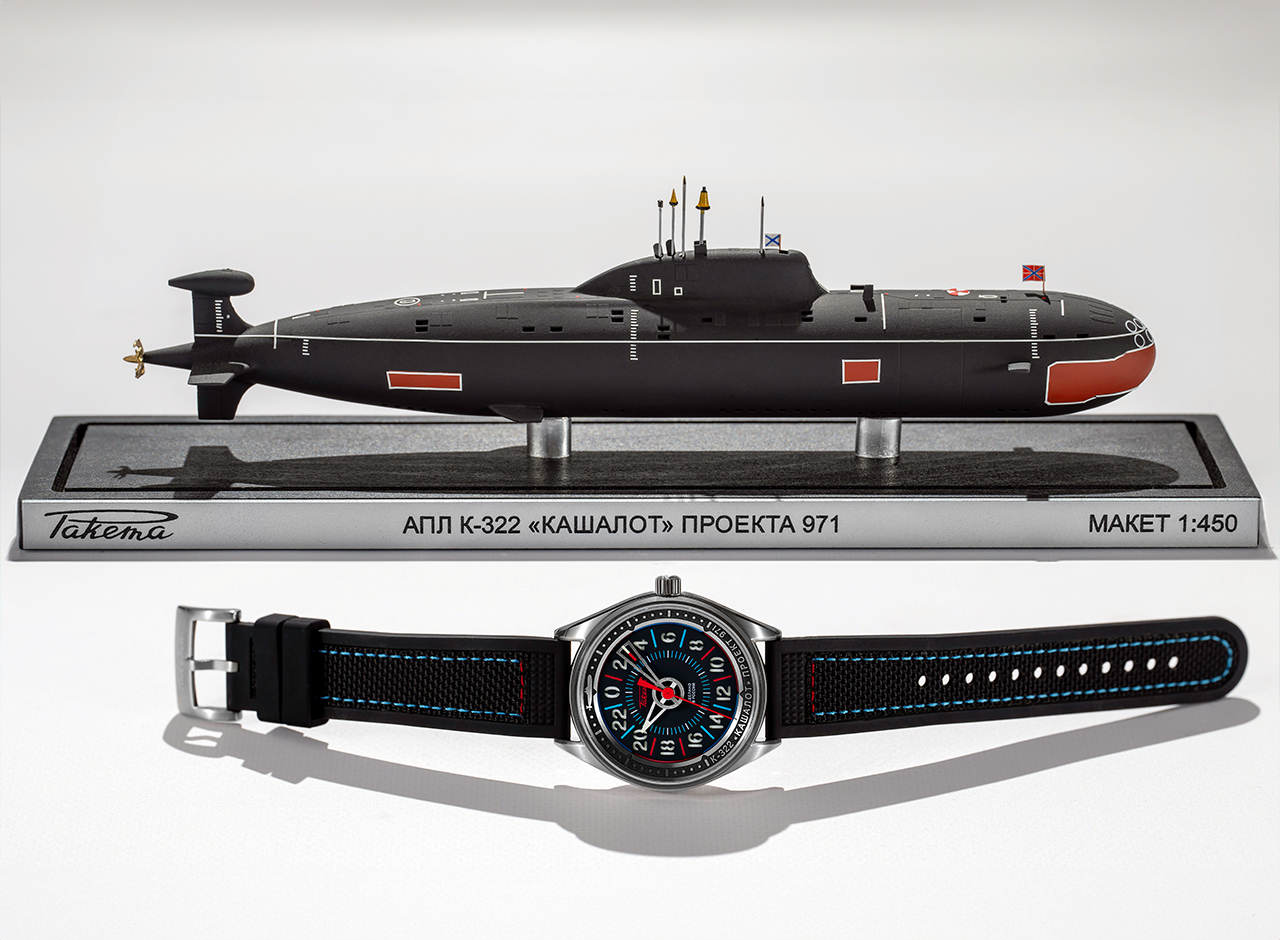
The Raketa “Sonar” model is a submariner’s watch by design and functionality: it has a Raketa 24 hour automatic movement, luminescent dial and hands and a bi-directional rotor, which submarine crews badly need.
In addition to the Raketa “Sonar” model for the main collection, Raketa has launched a limited edition of 500 pieces — Raketa “Sonar Kashalot”. The bezel of this watch for submariners is made from titanium of the nuclear powered submarine K-322 “Kashalot”. The metal was obtained during the submarine’s deconstruction at the Amur Shipbuilding Plant and was officially given to the Raketa Watch Factory.

Based in Saint-Petersburg, on the shores of the Baltic Sea, Raketa Watch Factory has been creating watches for sailors, submariners, and divers for more than half a century. Raketa presents today a new version of its model for divers – Amphibia.
While preserving both the spirit and identity of its predecessors, this iconic model is now in conformity with all the modern requirements for diving, both in terms of design and functionality.

Сase made from stainless steel and capable of withstanding pressures at 200 metres depth. A screw-in crown securing the movement from any water entry. A unidirectional bezel with a 15-minute scale and luminescent indexes, producing clear clicking sound for error-free adjustment with no risk of accidental misalignment. The start marker is embossed as part of a functional design.

A high-contrast dial with large indexes and hands, easy to read and enhancing dive control. The luminescent coating ensures a bright and long-lasting glow. At greater depths, where visibility is often low and light conditions vary, orange stands out more effectively than any other color because its wavelength is less absorbed by water. A brightly colored silicone strap crafted for comfort in aquatic environments: with its full-length perforations, you may adjust the size for a snug fit with your wetsuit and prevent water build-up beneath the strap. A second strap in black silicone is included, and swapping is easy with a quick-release system.

The heart of Raketa Amphibia is its automatic movement, manufactured from A to Z at the Raketa Watch Factory in St. Petersburg. The movement’s rotor is adorned with an image of a mermaid designed in the style of illustrations from Russian fairy tales. It reminds every diver of his secret dream — to encounter a beautiful mermaid under the sea.